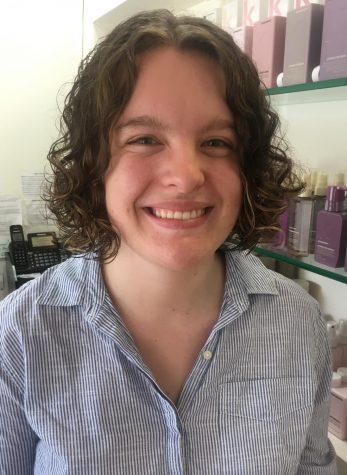More representation
Women deserve more attention in the ETHS curriculum
September 22, 2017
Women make up more than half the world’s population, but classes at ETHS rarely feature female accomplishments or perspectives.
The curriculum of history and English classes at ETHS is too male-centric. There is barely any coverage of female historical figures or literature. While the freshman Humanities curriculum does include some texts by female authors, it includes little to no integration of those books into the history curriculum. This leaves a huge gap in the topics covered; there is nothing that features women’s experiences or achievements.
Additionally, in the freshman Humanities textbook, McDougal Littell’s World History, the Women’s Suffrage Movement is represented by only a few paragraphs in over 1000 pages. When it is acknowledged, a mere two or three pages are reserved for this pivotal moment in history. This is a good example of the problem in the current curriculum; women’s issues may be acknowledged but are never deeply explored and are treated as smaller side notes to the main story.
Many books students read in higher level English classes are more traditional works, such as those by Ernest Hemingway or Charles Dickens. Although these are great examples of classic literature, they’re often the only texts that are studied and don’t allow for more diverse perspectives to be explored. Required reading for many advanced English classes is focused on preparing students for college, which is why most of these texts are written by male authors.
The inclusion of women’s history in ETHS curricula is vital because it teaches students about important aspects of history and allows female students to feel represented in the classroom. The high school years are often seen as a time when students make important personal choices and develop a strong sense of identity. This is why presenting teens with positive role models is crucial and a powerful way to do this is through English and history classes. Adding more female-centric literature and history not only offers a more balanced perspective in the classroom, but it also combats the harmful stereotype that women are not as capable as men in academic or high power positions.
Therefore, it is crucial that students in the first two years of high school be exposed to a variety of women’s perspectives in both history and English classes. One example of a text that could be read in freshman Humanities is The Yellow Wallpaper by Charlotte Perkins Gilman. Not only is it written by a woman, but it offers a searing perspective on the experience of an average woman in the late 19th century. This short story could easily be integrated into a history curriculum because it covers an important part of history, especially for women. Another book that could be added to the curriculum is I Am Malala by Malala Yousafzai, which is a memoir detailing the life of Malala Yousafzai, a young activist for women’s educational rights in the Middle East. This book could be easily read in freshman or sophomore English classes and directly addresses issues of identity and personal values facing teens today in a complex world.
Some may say that the curriculum is complete, that the material teaches all that students need to know; however, students aren’t really being taught extent of women’s accomplishments and presence in history and literature.
ETHS teachers and administrators need to reexamine the current English and history curriculum, making a concerted effort to integrate women’s contributions and perspectives.




















